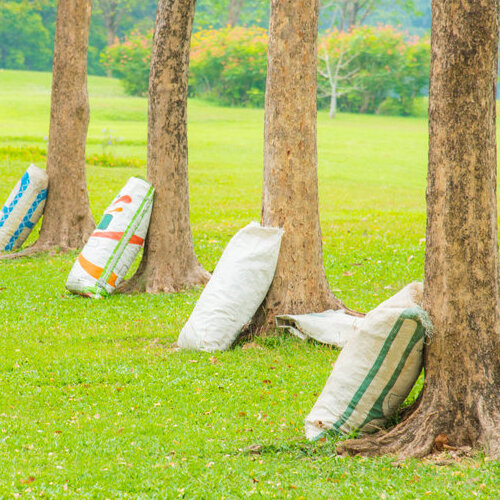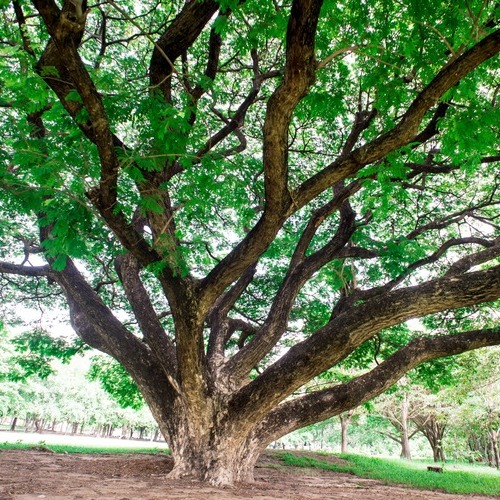
Whether it is around your home or your business, trees are a bonus. They provide beauty and shade, a habitat for nature, and more. For the most part, nature nurtures and takes care of them, they’re pretty self-efficient. But when you have new trees, or trees that are special to you, sometimes, you need help in caring for your trees, like professional tree fertilizer services.
Is tree fertilizing necessary?
For many, many years, even decades, taking care of trees or any plant life was almost routine. But it seems the weather patterns are changing, and the soil has changed as well, not to mention the air pollution has increased. So, taking care of your landscape has had to change as well, but perhaps you’re not sure why your plants and trees are struggling. With the help of professional tree fertilizer services, you can get the natural beauty around your home or business thriving again.
What exactly are tree fertilizer services?
By choosing to use tree fertilizer services, they have the education, knowledge, and skills to determine what your trees need. They will examine the trees, test the soil, and determine what steps and treatments are needed to protect and/or stimulate the root system.
Why would you choose to use tree fertilizer services?
They know how to make sure the treatment is evenly distributed so that it is more effective to get the best results. A tree fertilization program by a professional company that provides tree fertilizer services, or doing it yourself, will maintain your trees and shrubs, keeping them in vigorous condition and encouraging growth.
Tree fertilizer services will keep your trees resistant to diseases and insects. As professional arborists, they will know how to make the soil and roots healthier so that the tree flourishes. You can choose to have a routine program for their services, or let them address your concerns by answering questions like, “When should I fertilize my trees?”
Here in Texas, the best times for tree fertilizer services are in the spring and fall, with the fall season of fertilizing the most important fertilizing. Why are fall tree fertilizer services so important?
Tree fertilizer services during the fall season will supplement the nutrients that trees lose during winter weather, keeping them healthy. Especially if you’re a homeowner who rakes the leaves every fall. So, is raking leaves not good for the trees? This seems to be a right of passage, rake the leaves, the kids jump in the piles, and you rake them again. Some homeowners will bag those leaves and use them as decorations for Halloween.
Well, for healthy trees, there isn’t any need to rake every leaf you see on the ground. If you do rake, mow the ones you don’t get and leave them be. You can even use the leaves you rake up as winter mulch around the base of the trees. Or add to your compost pile for mulch in your spring gardens. When it comes to doing your tree fertilizer services, only apply fertilizer when the ground temperature is at or above 55°F. This will help to sidestep unseasonal growth that could damage your trees.
What is the best way to fertilize a full-grown tree?
During the growing season for trees, fertilizing services can help with any mineral deficiencies and make the tree resistant to diseases that can cause permanent damage. A good fertilizer should contain the following ingredients:
- Macronutrients such as:
- Nitrogen
- Phosphorus
- Potassium
- Micronutrients such as:
- Iron Magnesium
- Manganese
Each of these has different effects on a tree’s growth. Where professional tree fertilizer services can help you by advising you on the right formula for different trees. Not all trees need the same formulas or levels of fertilization.
The steps you take in your tree fertilizer services are just as important as the fertilizer. Never over-fertilize! The recommended amount is between .10 to .20 pounds of nitrogen for every 100 square feet. Too much can burn the roots and the soil surrounding the tree. Apply the fertilizer by dropping or scattering it under the drip zone of the tree.
What is the drip zone?
The drip zone is the area under the outer circumference of the branches. This is considered the canopy and when it gets wet, the excess water sheds onto the ground along the dripline.
Should you fertilize a struggling tree?
If you have a tree with any of the following, this is a struggling tree and it needs deep root tree fertilizer services to give it the right amount, process, and type of treatment:
- Defoliation
- Slow growing
- Fewer leaves
- Smaller leaves than normal
- Leaf color changes too early
- Leaves dropping too early
- Leaves that appear to be scorched
- Tree canopy dying from the top
What is deep root tree fertilizing treatment?
Professional tree fertilizer services use a specialized application of the right fertilizer that will restore the struggling tree. This process includes using high-pressure equipment that injects, typically around 5” deep, a blend of nutrients and organic matter into the surrounding soil that will reach the trees’ roots
This process is done in a grid pattern to ensure that all of the root zone parts receive a sufficient amount of nutrients. They will continue this process under the tree canopy and extend just past the drip line.
To The Root Of The Matter: Cost
Yes, professional tree fertilizer services are going to be somewhat costly, but is it worth it? Yes, if you want to maintain the beauty, shade, and natural habitat around your business or home. If you have new landscaping and have just had a few select trees planted on your property, professional tree fertilizer services will make sure they have a good start and can instruct you on how to care for them going forward.

